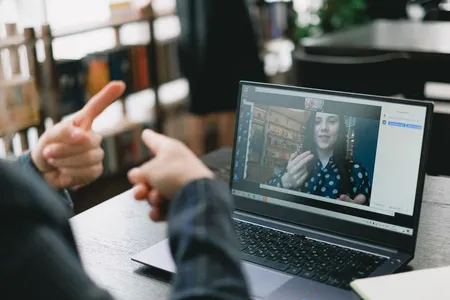Toledo: Deciphering Secrets of Medieval Spain
- 0.0
Approx. 37 hours to complete
Course Summary
Unlock the secrets of medieval Spain with this course that explores the history and culture of the city of Toledo.Key Learning Points
- Learn about the diverse cultural influences that shaped medieval Spain
- Discover the important role that Toledo played in the history of Spain
- Explore the city's fascinating architecture and art
Job Positions & Salaries of people who have taken this course might have
- Historian
- USA: $63,100
- India: ₹4,57,000
- Spain: €26,000
- Tour Guide
- USA: $39,000
- India: ₹2,81,000
- Spain: €16,000
- Museum Curator
- USA: $51,000
- India: ₹3,69,000
- Spain: €21,000
Related Topics for further study
Learning Outcomes
- Understand the cultural influences that shaped medieval Spain
- Gain knowledge of the important role Toledo played in Spanish history
- Appreciate the city's fascinating architecture and art
Prerequisites or good to have knowledge before taking this course
- Basic knowledge of Spanish history
- Interest in medieval history and culture
Course Difficulty Level
IntermediateCourse Format
- Online
- Self-paced
- Video lectures
Similar Courses
- Spanish History: From the Moors to the Modern Day
- Art of Ancient Egypt and the Near East
Related Education Paths
Notable People in This Field
- Historian and Author
- Art Historian
Related Books
Outline
- Course Introduction and an Abbreviated History
- Welcome to the Course!
- Key Elements of the Course
- Medieval Spain: A Historical Overview
- Roman Hispania (201 BCE-418 CE)
- Visigothic Hispania (418-711 CE)
- Course Introduction
- Revise: Course Syllabus
- Course Assessments
- Collaborators and Funders
- Communication and Social Media
- Discussion Guidelines
- Week One Overview
- Why study medieval Spain? Viewing our modern challenges through the lens of the past.
- Hispania: Iberia in Relationship to the Romans
- The Fall of Rome and the Visigoths
- The Formation of Medieval Europe
- Byzantium: The Eastern Roman Empire
- Europe's Sibling, the Islamic World
- Toledo: Neolithic and Bronze-Iron Ages
- Toledo: Under Roman Rule
- Toledo: Capital of the Visigoths (5th – 7th Centuries CE)
- Toledo: A Monetary Center for the Visigoths
- Supplemental Reading: Chapter 1: Ancient Hispania, A History of Spain and Portugal, V. 1
- Supplemental Reading: The Visigothic Code
- Supplemental Web Materials: Google Arts and Culture: Historic City of Toledo
- Supplemental Reading: Hodgkin, Thomas. "Visigothic Spain." The English Historical Review 2, no. 6 (1887): 209-34.
- Supplemental Journal Article: Spain’s Newly Renovated Museo Arqueológico Nacional
- History Quiz 1: Course Introduction and an Abbreviated History
- Jews, Christians, and Muslims in Medieval Toledo Until 1212 CE
- Islamic Conquest and Settlement (711-756 CE)
- Islamic al-Andalus: The Umayyad Dynasty (756-1061 CE)
- Introduction to the Museo de Santa Cruz (Toledo)
- Islamic Toledo and Material Culture – Part 1
- Islamic Toledo and Material Culture – Part 2
- Islamic Toledo and Material Culture – Part 3
- Resurgent Christian Kingdoms (711 – 1212 CE)
- Week Two Overview
- Islamic Conquest of Visigothic Spain (711 CE)
- Al-Andalus: Islamic Spain (711-1061 CE)
- Sefarad: Jewish Spain
- Toledo: Under the Umayyads (711-1009)
- Islamic Water and Food Revolution in Iberia
- Islamic Taifa Kingdoms (1009-1091), Almoravids (1086-1145), and Almohads (1145-1269)
- The Taifa of Toledo: Independent Islamic Kingdom (1009 - 1085)
- The Christian Kingdom of Castile and the Origins of the Reconquest (711 - 1212 CE)
- Saint James and the Pilgrimage to Santiago de Compostela
- Toledo: The King Who Re-claimed the City: King Alfonso VI of Castile and Leon
- King Alfonso VIII and Queen Leonor: From Alarcos to Las Navas de Tolosa
- Civilizations in Conflict?: The Complications of the Reconquista
- Supplemental Reading: Chapter Two: Al-Andalus
- Supplemental Reading: Chapter Four: Castile-León in the Era of the Great Reconquest
- History Quiz 2: Jews, Christians, and Muslims in Medieval Toledo Until 1212 CE
- Jews, Christians, and Muslims in Medieval Toledo After 1212 CE
- Catholic Spain and the Nasrids (1212 – 1502 CE)
- Christian Toledo and Material Culture
- The Museo Sefardí - Director Santiago Palomero Plaza
- Moving from Judaism to Catholicism: Re-Appraising the Santa María
- Cultural Backlash: Blood Purity Statutes and Intolerance
- Week Three Overview
- What is coexistence (convivencia)? It is positive, negative, and ambivalent.
- Simon R. Doubleday's The Wise King: A Christian Prince, Muslim Spain, and the Birth of the Renaissance
- Castilian King Alfonso X "The Wise" (r. 1252-1284 CE) and the Cantigas de Santa Maria
- Alfonso X's Las Siete Partidas: A Legal Code for Three Religions
- Mozarabs of Toledo: Christians Who Assumed Islamic Culture
- Jewish Love and Marriage in Christian Spain
- Jewish and Converso Intermediaries in Medieval Toledo and Castilian Kingdom
- Todros Abulafia: A 13th Century Jewish Poet Fond of Debate
- Unforeseen Events: The Plague, A Dead King, and Anti-Jewish Sentiment
- Toledo at the Center of "Blood Purity" Laws: Separating "New" from "Old" Christians (1450s)
- Christian Unity Under Queen Isabel (Castile and Leon) and King Ferdinand (Aragon and Catalonia)
- Creating Conversos: The Carvajal-Santa Maria Family in Early Modern Spain
- The Spanish Inquisition Begins Its Work (1478 - 1480 CE)
- The Spanish Tisha B'Av: The End of Jewish Spain and the Expulsion (1492)
- Departing Spain: Jewish Artifacts from the Museo Sefardi of Toledo
- Queen Isabel and King Ferdinand Expel Spanish Muslims (1502 CE)
- History Quiz 3: Jews, Christians, and Muslims in Medieval Toledo After 1212 CE
- Introduction to Archives and Paleography
- Introduction to the Archivo Municipal de Toledo and Its "Secret Archive"
- Introduction to the Archivo Historico de la Nobleza
- Week Four Overview - Archives and Paleography
- Introduction: What is Paleography?
- Choose One Level of Difficulty: Introductory, Intermediate, or Advanced Paleography
- Collection of Paleography Resources
- Collection of English-Spanish Language Resources
- Introduction to Archives and Paleography: Lesson Choices
- Introductory Paleography: A Script from the 18th-19th Century
- Intermediate Paleography: A Script from the 13th Century
- Advanced Paleography: A Script from the 15th Century
- 18th-19th Century Paleography Problem A - Set 1
- 18th-19th Century Paleography Problem A - Set 2
- Introductory 18th-19th Century Paleography Quiz
- 13th Century Paleography Problem Set A
- 13th Century Paleography Problem Set B
- 13th Century Paleography Problem Set C
- Intermediate 13th Century Paleography Quiz
- 15th Century Paleography Problem A - Set 1
- 15th Century Paleography Problem A - Set 2
- 15th Century Paleography Problem A - Set 3
- Advanced 15th Century Paleography Quiz
- The SILReST Paleography Method for 15th Century Manuscripts
- Advanced Spanish Paleography: Essential Transcription Strategies - SILReST (sĭll-rĕst)
- Advanced Spanish Paleography: Essential Strategy #1 - Scan the document
- Advanced Spanish Paleography: Essential Strategy #2 - Identify easy letters
- Advanced Spanish Paleography: Essential Strategy #3 - Locate common words
- Advanced Spanish Paleography: Essential Strategy #4 - Recognize abbreviations
- Advanced Spanish Paleography: Essential Strategy #5 - Search for cognates
- Advanced Spanish Paleography: Essential Strategy #6 - Type your transcription
- Advanced Paleography: Learning a Script from the 15th Century (Part 1)
- Advanced Paleography: Learning a Script from the 15th Century (Part 2)
- Week Five Overview
- The SILReST Paleography Method
- SILReST Paleography - Problem A - Strategies 1 and 2
- SILReST Paleography - Problem B - Strategies 3 and 4
- SILReST Paleography - Problem C - Strategies 5 and 6
- SILReST Paleography Method Quiz: A Quick Reminder
- The Global Team at Work: Transcription & Interpretation Project
- Overview of Paleography Projects and a Farewell
- Week Six Overview
- Introductory 18th-19th Century Manuscripts
- Intermediate 13th Century Manuscripts
- Advanced 14th-15th Century Manuscripts
- The Global Team at Work: Transcription & Interpretation Project: Lesson Choices
- Optional Practice Collaborative Project: Introductory 18th-19th Century Paleography
- Optional Practice Collaborative Project: Intermediate 13th Century Paleography
- Optional Practice Collaborative Project: Advanced 14th-15th Century Paleography
Summary of User Reviews
Discover the secrets of medieval Spain with the Toledo Deciphering course on Coursera. Users have rated this course highly for its engaging content, interactive activities, and knowledgeable instructors. Many users found the historical context of the course to be particularly interesting.Key Aspect Users Liked About This Course
Many users found the historical context of the course to be particularly interesting.Pros from User Reviews
- Engaging content
- Interactive activities
- Knowledgeable instructors
- Clear explanations
- Helpful resources
Cons from User Reviews
- Some technical issues with the platform
- Not enough focus on certain topics
- Too much reading material
- Lack of interaction with other students
- No opportunity for hands-on learning









